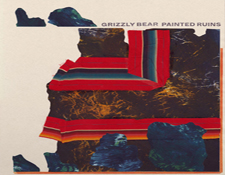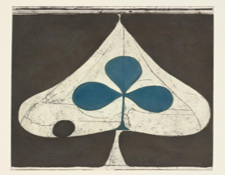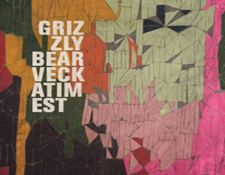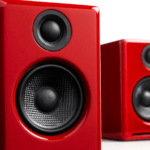It’s the time of year for saving money!
My editor planted a little seed in the back of my head recently when I had to make a sudden family emergency trip back East and had to complete follow-on work for some reviews remotely. He hepped me to the app version of Tidal which I was able to load up on my iPad. As a reference tool, it has been very handy to have there, I will admit. And it got me wondering whether at some point I might be able actually do a review based solely on a streaming service like Tidal.
 Tidal is a little different from the other services out there (as far as I know thus far) not only because of its creation by and for musicians but also due its accommodation for the MQA codec, a higher resolution format which is apparently optimized for streaming. I haven’t studied MQA deeply at this point from a technical standpoint — I know that there is a big divide of believers and disbelievers — as that discussion is not really my focus here. However, I have been listening on Tidal from a purely musical and functional perspective to try to see if it fits in my lifestyle. It is making me think about the intrinsic value of a streaming service in general for the audio-appreciative listener like myself (and perhaps some of you, Dear Readers). Thus far, I’ve done numerous comparisons between Tidal streams, vinyl and high resolution physical media counterparts when available with mixed results largely dependent on the quality of the source material available on the service (a challenge not unique to Tidal).
Tidal is a little different from the other services out there (as far as I know thus far) not only because of its creation by and for musicians but also due its accommodation for the MQA codec, a higher resolution format which is apparently optimized for streaming. I haven’t studied MQA deeply at this point from a technical standpoint — I know that there is a big divide of believers and disbelievers — as that discussion is not really my focus here. However, I have been listening on Tidal from a purely musical and functional perspective to try to see if it fits in my lifestyle. It is making me think about the intrinsic value of a streaming service in general for the audio-appreciative listener like myself (and perhaps some of you, Dear Readers). Thus far, I’ve done numerous comparisons between Tidal streams, vinyl and high resolution physical media counterparts when available with mixed results largely dependent on the quality of the source material available on the service (a challenge not unique to Tidal).
A little background on me before I get to the review part of our show today: I am sort of a populist audiophile. I like good sound but I also respect the notion of good quality sounding “everyman” gear anyone can afford and integrate into their lifestyles. That becomes a much more appealing concept for audiophilia (if you will) for me than keeping it an exclusivist club priced only for the financially elite. I still like physical media and continue to purchase high resolution Blu-ray Audio Discs and vinyl long playing records as well. Heck, I still periodically pick up 78 RPM discs from time to time — including some really old ones to play on my vintage all acoustic 1921 Victrola XXVI which I restored a number of years ago! But indeed these are Twenty-first Century times we live in, so it is important as a reviewer to keep current with what is going on out there. That said, I recognize that a lot of people are perfectly OK with streaming new music from places like Tidal, Spotify, Apple Music, Google and Tidal. Hopefully the artists get a bit more from the streams on musician-driven services like Tidal.
 All that said, I had not yet tried exploring new music solely on Tidal up until today as I questioned whether I could judge the music fairly. That is: can a new recording sound “good enough” on Tidal to make me a fan of the recording and/or the artist? Will the stream make want to buy it? Will the stream satisfy and connect with me enough that I might not actually need the recording on physical media such as vinyl or a Blu-ray Audio Disc. Will the stream be as good as a high resolution download of the same music?
All that said, I had not yet tried exploring new music solely on Tidal up until today as I questioned whether I could judge the music fairly. That is: can a new recording sound “good enough” on Tidal to make me a fan of the recording and/or the artist? Will the stream make want to buy it? Will the stream satisfy and connect with me enough that I might not actually need the recording on physical media such as vinyl or a Blu-ray Audio Disc. Will the stream be as good as a high resolution download of the same music?
Lately I’ve been revisiting an album I’d picked up a while ago on CD by Grizzly Bear called Veckatimest. It was my introduction to the band a few years ago — their third album, — and re-listening to it with fresh ears has been a revelation. I do love this album. So, I have asked myself why haven’t I “gone deep” on their catalog? Good question! I guess I had other things to listen to and well, life has this way of intervening and suddenly you’ve moved on to something else.
So, better late than never to explore more Grizzly Bear.
Curiously, I was surprised to find that this acclaimed breakthrough album is NOT on the Tidal streaming service. But…all of the band’s other albums are up there (alas, only in CD quality) making it a perfect time to try reviewing a new Grizzly Bear recording based solely on its digital streaming presentation.
 Grizzly Bear’s 2012 album Sheilds (in 16-bit, 44.1 kHz resolution) sounds pretty solid up on Tidal. I mean, it sounds about like I would expect a modern, digitally-recorded CD to sound (there are no liner notes in that regard here so I am making an admittedly perhaps brash assumption… the wiki indicates it was recorded in one of the band members’ grandmother’s house in Cape Cod, so I’m guessing they didn’t roll in a big two-inch analog reel to reel deck and mixing board for that sort of home-brewed recording situation).
Grizzly Bear’s 2012 album Sheilds (in 16-bit, 44.1 kHz resolution) sounds pretty solid up on Tidal. I mean, it sounds about like I would expect a modern, digitally-recorded CD to sound (there are no liner notes in that regard here so I am making an admittedly perhaps brash assumption… the wiki indicates it was recorded in one of the band members’ grandmother’s house in Cape Cod, so I’m guessing they didn’t roll in a big two-inch analog reel to reel deck and mixing board for that sort of home-brewed recording situation).
There is a light angularity to the sound but nothing that is hurting my ears horribly. More importantly, the overall feel and texture of the music sounds organic (if you will). The separation is clear. Highs and lows are tight. The drums sound quite good for the most part, with some decent sense of room sound. The mid ranges could probably be stronger, but overall, happily, this album sounds good as it is a logical extension of that third Grizzly Bear album I like so much.
I suspect that right about now some of you might be wondering what Grizzly Bear actually sound like? Well, try to imagine… a singer whose voice falls somewhere in the grand canyon between Bono, Beck and Thom Yorke … And he’s fronting group channeling an alternate universe version of Captain Beefheart’s Magic Band by way of pre-Fragile Yes, The High Llamas’ Brian Wilson-inspired experiments, Violater-era Depeche Mode, Zach Condon‘s amazing Beirut , The Pretty Things’ Parachute and of course Radiohead all whipped up in a Philip Glass blender. The resultant music is : electric, acoustic, ambient, poppy, rich, complex, rocking, proggy, psychedelic, melodic, weird, mesmerizing, catchy, fun and haunting. All those words and more apply to this music — mix ‘n match your favorites.
So back to Sheilds, this album is pretty great. I need to pick it up on vinyl or whatever other higher resolution format I find out there for the collection. Again, the Tidal streams are not available in MQA format, so you can only listen in 44.1 kHz/16-bit resolution.
Grizzly Bear’s most recent album Painted Ruins was a more challenging listening affair for me via streaming media. This is a very different sounding record for the band from the get go. Initially, it seems to have something of a sequenced drum sensibility to it (such as on tracks like “Morning Sound”) and more digital flavored effects. And here in lies the rub for me, the point where a streaming service doesn’t work consistently for me as primary listen; I’m honestly not sure of exactly what I am hearing here. Is that sort of harsh (to my ear) sonic texture part of the actual recording, as the band intended it? Overall on this recording (as I am hearing over the Tidal stream) there is more of what I’ve come to describe as a digital edge enveloping this music. Is the music being somehow negatively impacted by the stream itself? My particular high speed Internet connection provider has something of a history of throttling our connectivity so am I really hearing the whole of the available music or just a dumbed-down version being fed to me? Out of curiosity I went to try streaming Painted Ruins on Amazon Prime and the sound was about the same, if a bit quieter in terms of initial output — had to turn up the volume on my amp. My hopes for much higher resolution download were crushed when I found only one Grizzly Bear album up on HDTracks (in 44.1 kHz, 24-bit quality).
Anyhow, this sort of stuff makes it more difficult to make a deeper emotional connection with the music, for me at least initially. There are things going on here that are unpleasing to the ear purely from an audio listening experience and I’ll have to figure out a work-around to that somehow. I will likely buy Painted Ruins on vinyl as I have decided that I really DO like Grizzly Bear enough to make them a permanent addition to my collection and I’ll have to hope it sounds better there. Don’t get me wrong, the underlying music here sounds compelling but — in this particular instance, for this particular album — streaming alone isn’t making it for me as a long term listening experience.
That is not to say that streaming version isn’t useful. To the contrary, the concept of streaming is VERY useful as a new music sampling and preview medium. And if you are playing your music back solely through one of those little new single speaker thingies which have grown popular in mainstream non-audiophile circles, this will probably sound more than adequate.
So, there you have it: I score a 50/50 split enjoyability-wise when catching up on Grizzly Bear’s music via the digital streaming world.
What’s your favorite way to listen to Grizzly Bear? Let us know in the comments section below.








